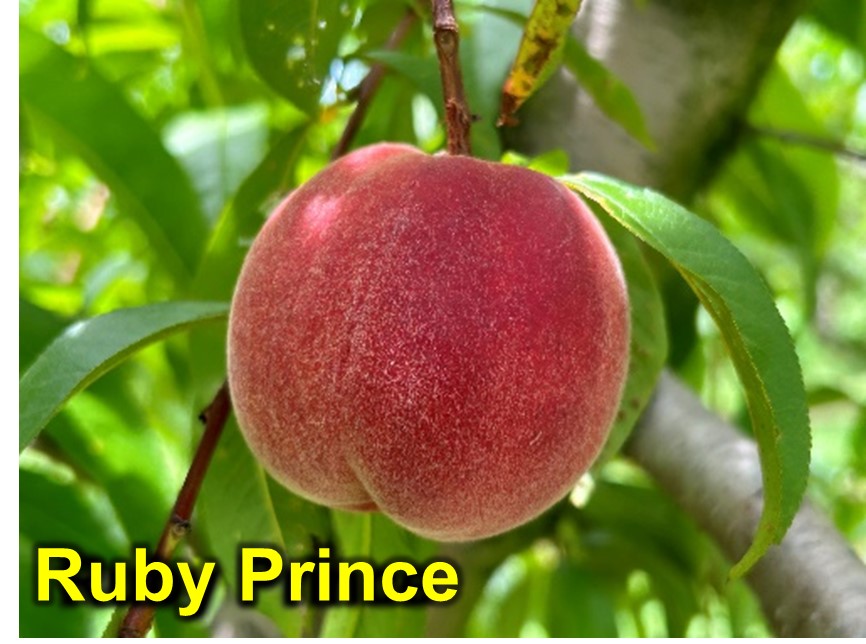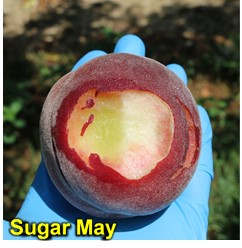 EVELYNN is a new, excellent, semi-free stone with a firm, yellow-fleshed peach variety. It is a low-acid, sweet to very sweet peach that ripens with Redhaven. Fruit is large, uniform, and has attractive, complete scarlet coloring, with smooth, low pubescence skin. It retains firmness on trees and during storage for longer than Redhaven, giving extra days for marketing the fruit. This variety is consistently productive and exhibits a low susceptibility to bacterial spot and split pits. Fruit skin doesn’t develop ‘inking’ even when it turns dark red. Bloom is generally delayed and extended, and, as a result, it produces a normal crop even in the frost years. Few varieties tick as many boxes as Evelynn. The fruit characteristics of Evelynn and other popular varieties in this season are compared in Table 1. [Read more…]
EVELYNN is a new, excellent, semi-free stone with a firm, yellow-fleshed peach variety. It is a low-acid, sweet to very sweet peach that ripens with Redhaven. Fruit is large, uniform, and has attractive, complete scarlet coloring, with smooth, low pubescence skin. It retains firmness on trees and during storage for longer than Redhaven, giving extra days for marketing the fruit. This variety is consistently productive and exhibits a low susceptibility to bacterial spot and split pits. Fruit skin doesn’t develop ‘inking’ even when it turns dark red. Bloom is generally delayed and extended, and, as a result, it produces a normal crop even in the frost years. Few varieties tick as many boxes as Evelynn. The fruit characteristics of Evelynn and other popular varieties in this season are compared in Table 1. [Read more…]
Late July Peach Varieties for New Jersey – New and Standard
Late-July Nectarine Varieties for New Jersey – New and Standard
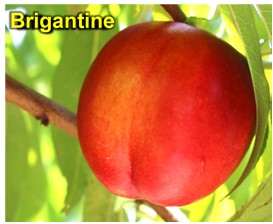 BRIGANTINE is a new yellow-fleshed nectarine with semi-freestone, ripening July 20-25, just before ‘Summer Beaut’ and ‘Redhaven’. It has a full, glossy scarlet coloring with a slight golden-yellow background. Fruit skin is consistently free from blemishes. It has a nice, sweet, and acidic flavor, and firm, melting flesh. Flesh has traces of red. This is a very productive tree with low susceptibility to bacterial spot, while the fruit has slight to moderate susceptibility to bacterial spot. Fruit hangs well. Fruit characteristics of Brigantine and other late-July nectarines are listed below in Table 1. [Read more…]
BRIGANTINE is a new yellow-fleshed nectarine with semi-freestone, ripening July 20-25, just before ‘Summer Beaut’ and ‘Redhaven’. It has a full, glossy scarlet coloring with a slight golden-yellow background. Fruit skin is consistently free from blemishes. It has a nice, sweet, and acidic flavor, and firm, melting flesh. Flesh has traces of red. This is a very productive tree with low susceptibility to bacterial spot, while the fruit has slight to moderate susceptibility to bacterial spot. Fruit hangs well. Fruit characteristics of Brigantine and other late-July nectarines are listed below in Table 1. [Read more…]
Mid-July Nectarine Varieties for NJ – Silvergem, Silverglo, Easternglo, and Avalon
There are four excellent, yellow and white-fleshed nectarine varieties harvested during mid-July. These varieties were developed at the Rutgers Fruit Breeding program and evaluated over the years at multiple Southern New Jersey locations. The ripening days could be a few days later for central and northern New Jersey. [Read more…]
Mid-July Peach Varieties – Gala, PF 8 Ball, Summer Serenade, July Rose, and PF Lucky 13
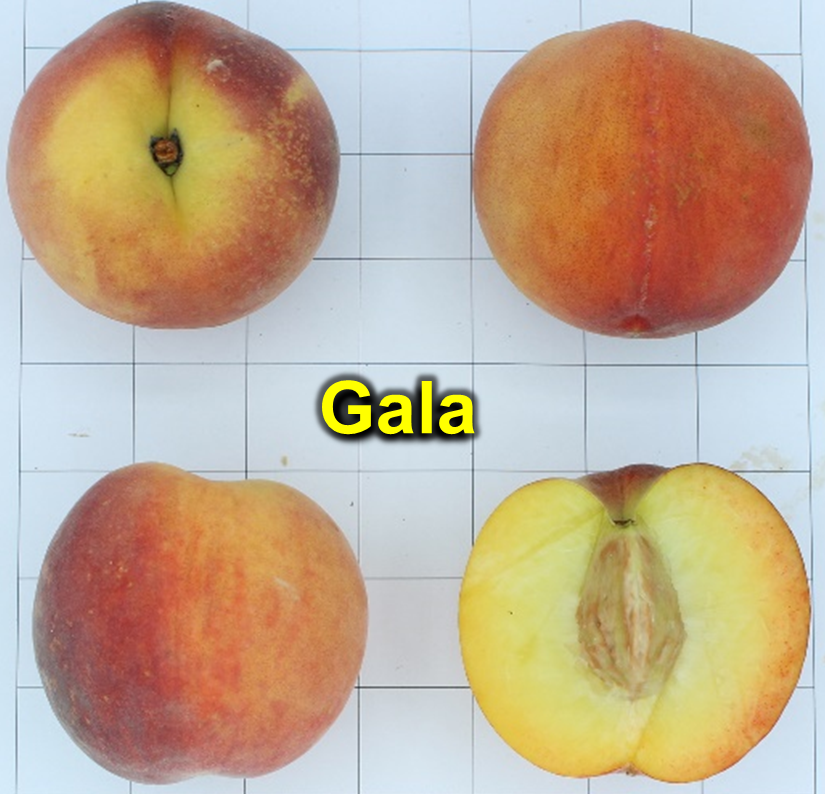 GALA is a medium to medium-large, globose, 70-90% scarlet red over yellow-orange ground color, yellow-fleshed, semi-freestone peach ripening July 11-15, about a week after the Sentry. The flesh is firm, with a sweet and mildly tangy flavor. The tree is vigorous and moderately productive. Note that these varieties were evaluated in southern New Jersey; as a result, the harvest dates could be a few days later for the Central and Northern New Jersey orchards.
GALA is a medium to medium-large, globose, 70-90% scarlet red over yellow-orange ground color, yellow-fleshed, semi-freestone peach ripening July 11-15, about a week after the Sentry. The flesh is firm, with a sweet and mildly tangy flavor. The tree is vigorous and moderately productive. Note that these varieties were evaluated in southern New Jersey; as a result, the harvest dates could be a few days later for the Central and Northern New Jersey orchards.
Challenges: Gala is a beautiful peach in a great season, but the size and yield could be highly variable. Split pits are a problem even in a normal year, and the first pick may have significant split pits. Fruit has medium susceptibility to bacterial spot.
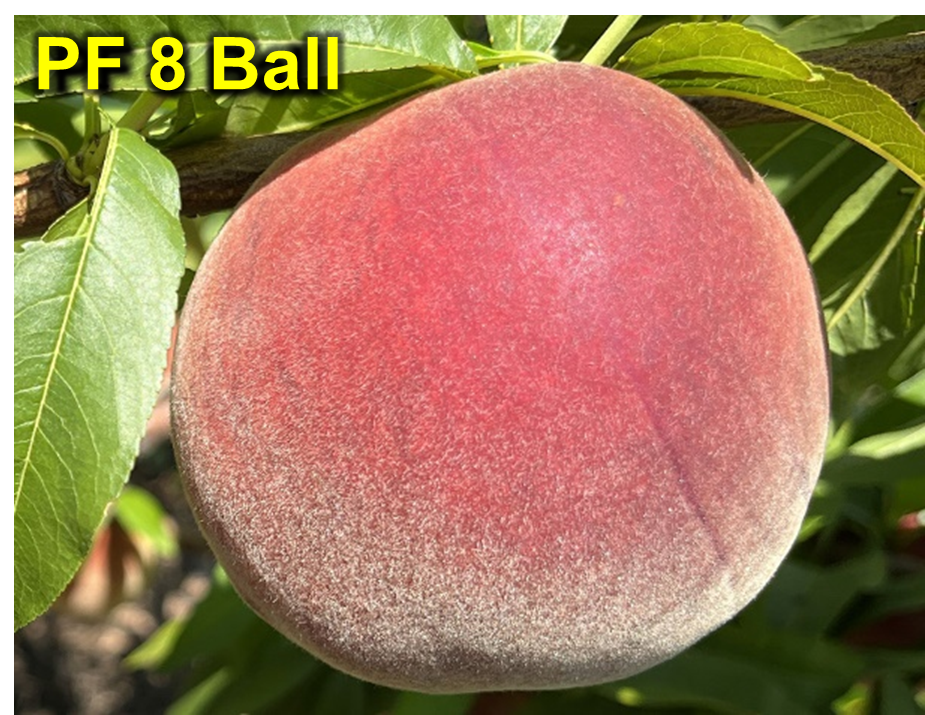 FLAMIN FURY® PF#8 BALL is a large, globose, 70-90% crimson red over greenish-yellow ground color, yellow-fleshed semi-clingstone peach with prominent suture groove, ripening during July 13-18. The fruit is firm, with melting, sweet, juicy flesh, and has a sweet and tangy flavor. The tree is spreading, vigorous, and productive, with medium susceptibility to bacterial spots. A promising variety because of its color and size. A good option to replace Gala peach.
FLAMIN FURY® PF#8 BALL is a large, globose, 70-90% crimson red over greenish-yellow ground color, yellow-fleshed semi-clingstone peach with prominent suture groove, ripening during July 13-18. The fruit is firm, with melting, sweet, juicy flesh, and has a sweet and tangy flavor. The tree is spreading, vigorous, and productive, with medium susceptibility to bacterial spots. A promising variety because of its color and size. A good option to replace Gala peach.
SUMMER SERENADE is a medium-large, globose to ovate, attractive, 50-70% crimson red over yellow-green ground color, yellow-fleshed, semi-clingstone peach ripening from July 13-16, approximately 11 days before Redhaven. The flesh is firm with fair to good flavor. The tree is moderately vigorous and productive, with low susceptibility to bacterial spot. Summer Serenade has a better size than Garnet Beauty and PF 7, with a significant suture groove and flavor like Garnet Beauty.
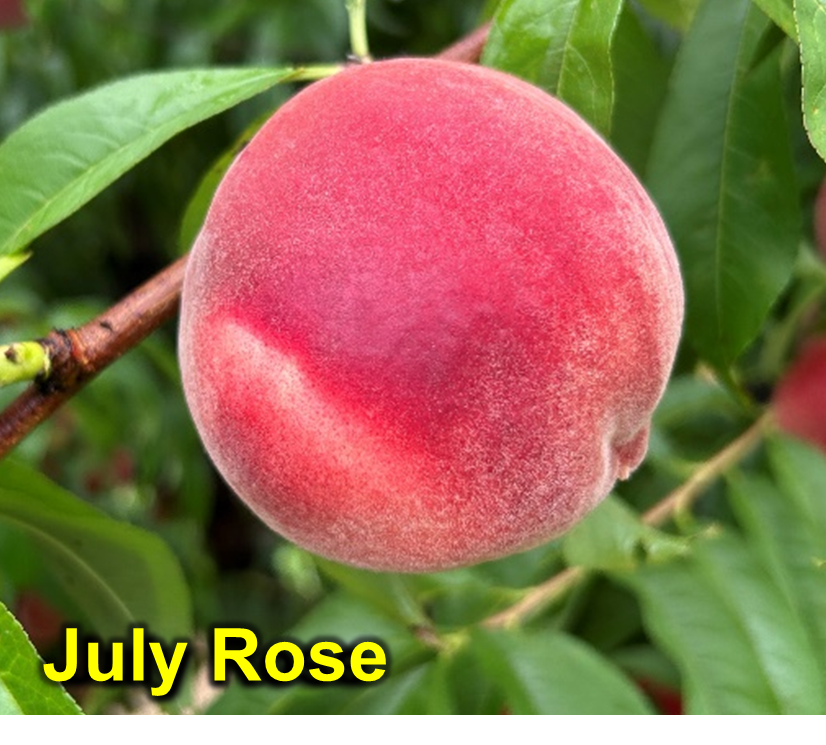 JULY ROSE is a popular white fleshed peach with excellent firmness, cling stone, and low fuzz. Fruit is large and attractive, and ripens between Sugar May and White Lady from 15-20 July. Fruit is always very sweet and sub-acid. It has good fruit and leaf resistance to bacterial leaf spot. Even poorly thinned trees tend to produce large-sized fruit. Moderate fruit or bloom thinning will be required to optimize size and quality. Fruit hangs well and has better cold-hardiness than other white varieties.
JULY ROSE is a popular white fleshed peach with excellent firmness, cling stone, and low fuzz. Fruit is large and attractive, and ripens between Sugar May and White Lady from 15-20 July. Fruit is always very sweet and sub-acid. It has good fruit and leaf resistance to bacterial leaf spot. Even poorly thinned trees tend to produce large-sized fruit. Moderate fruit or bloom thinning will be required to optimize size and quality. Fruit hangs well and has better cold-hardiness than other white varieties.
 Snowbrite is a good white-fleshed peach that ripens a few days after July Rose but is highly susceptible to bacterial spots. Scarlet Pearl is another good white-fleshed peach. However, it is a cold, tender variety and produces split pits.
Snowbrite is a good white-fleshed peach that ripens a few days after July Rose but is highly susceptible to bacterial spots. Scarlet Pearl is another good white-fleshed peach. However, it is a cold, tender variety and produces split pits.
FLAMIN FURY PF LUCKY 13 is a large, globose to slightly ovate, heavy scarlet red over orange-yellow ground color, yellow-fleshed, freestone peach ripening near or earlier than Redhaven. The flesh is crunchy, firm, and sweet and tangy. The tree is vigorous and productive, with slight drop and inking tendencies and low to moderate susceptibility to bacterial spots. This very attractive peach has also shown good size and minimal splits.
Previous related articles
- Early July Peach Varieties: https://plant-pest-advisory.rutgers.edu/early-july-peach-varieties-sentry-glenglo-ruby-prince-garnet-beauty-and-sugar-may/
- Late June Peach Varieties: https://plant-pest-advisory.rutgers.edu/late-june-peach-varieties-for-new-jersey-new-and-standard/
Early July Peach Varieties – Sentry, Glenglo, Ruby Prince, Garnet Beauty, and Sugar May
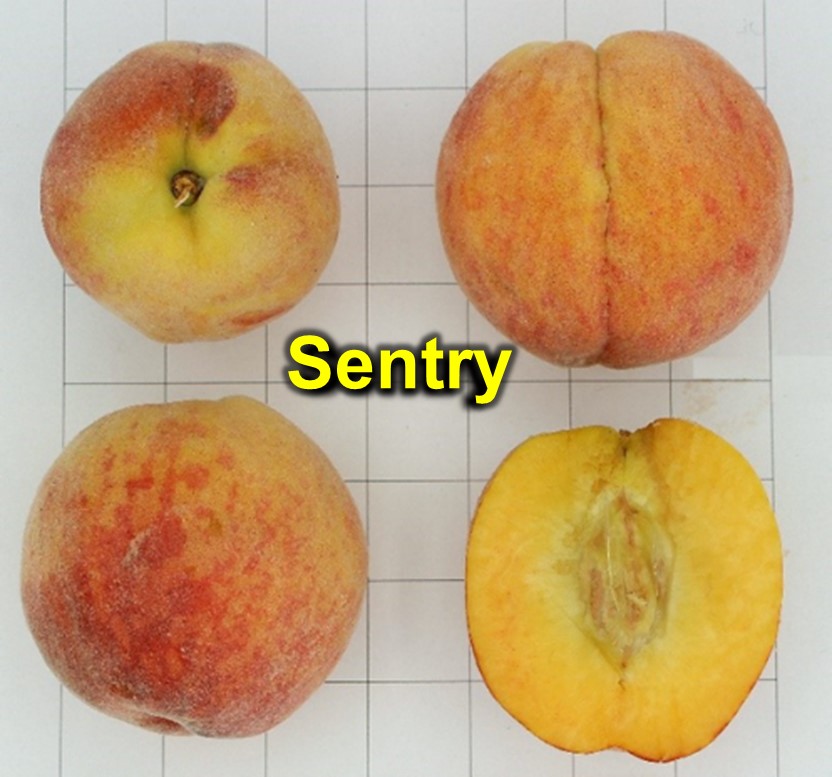 Warmer temperatures and periodic rains in the last few weeks helped early July peach varieties achieve a bigger size. There are excellent peach varieties throughout the harvest season; however, each has a few challenges, and understanding the overall tree and fruit characteristics can help make thinning, harvest, disease management, and post-harvest decisions. The Newer varieties were also compared against standard varieties. Understanding these differences is essential for selecting new varieties or replacing existing ones. Note that these varieties were evaluated in southern New Jersey; as a result, the harvest dates could be a few days later for the Central and Northern New Jersey orchards.
Warmer temperatures and periodic rains in the last few weeks helped early July peach varieties achieve a bigger size. There are excellent peach varieties throughout the harvest season; however, each has a few challenges, and understanding the overall tree and fruit characteristics can help make thinning, harvest, disease management, and post-harvest decisions. The Newer varieties were also compared against standard varieties. Understanding these differences is essential for selecting new varieties or replacing existing ones. Note that these varieties were evaluated in southern New Jersey; as a result, the harvest dates could be a few days later for the Central and Northern New Jersey orchards.
Sentry: It’s a medium-large to large, red over green-yellow ground-colored peach that ripens during the first week of July. The flesh is moderately firm, very sweet, and mildly tangy (Total Soluble Solids (TSS) 11.32 Brix and Titratable Acidity (TA) 2.08 g/l). It is one of the sweeter varieties in this harvest window. In general, the TSS greater than 11 Brix is considered very sweet. It can get bigger up to 3 inches in diameter, however, at the cost of firmness. It has low susceptibility to the bacterial spot.
 Challenges: The main challenge is that fruit has a variable cropping record, but growers prefer it because of its size and taste. Also, a green-yellow background color may give the impression of unripe fruit. Some growers have noticed that older trees of Sentry produced unevenly ripened fruit where one end of the tip was softer while the other end was much firmer. Bigger fruits tend to split. The general recommendation is to avoid letting fruit get bigger than 2 ¾ inches till the Redhaven season.
Challenges: The main challenge is that fruit has a variable cropping record, but growers prefer it because of its size and taste. Also, a green-yellow background color may give the impression of unripe fruit. Some growers have noticed that older trees of Sentry produced unevenly ripened fruit where one end of the tip was softer while the other end was much firmer. Bigger fruits tend to split. The general recommendation is to avoid letting fruit get bigger than 2 ¾ inches till the Redhaven season.
Glenglo: It’s an attractive yellow-fleshed peach that gets harvested a few days after ‘Sentry’. In some years, it gets harvested before Sentry or overlaps with Sentry. The fruit is medium-large in size, sweet, acidic, and mildly tangy (TSS 11 Brix; and TA 2.5 g/l). It has low susceptibility to bacterial Spot. The cold-hardiness is better than Sentry’s. Glenglo is comparable to Sentry; however, it does not have the problem of uneven ripening. It is considered worthy of replacing “Sentry.
Ruby Prince: It’s a medium-large, globose, and attractive semi-clingstone yellow-fleshed peach variety that ripens a few days after Sentry and Glenglo. The flesh is moderately firm with a sweet and mildly tangy flavor. The scarlet-red over yellow skin color and uniform shape of fruit makes it very attractive variety. It is a worthy replacement of ‘Sentry’. The flesh has greater traces of red. Fruit size is medium to large and uniform.
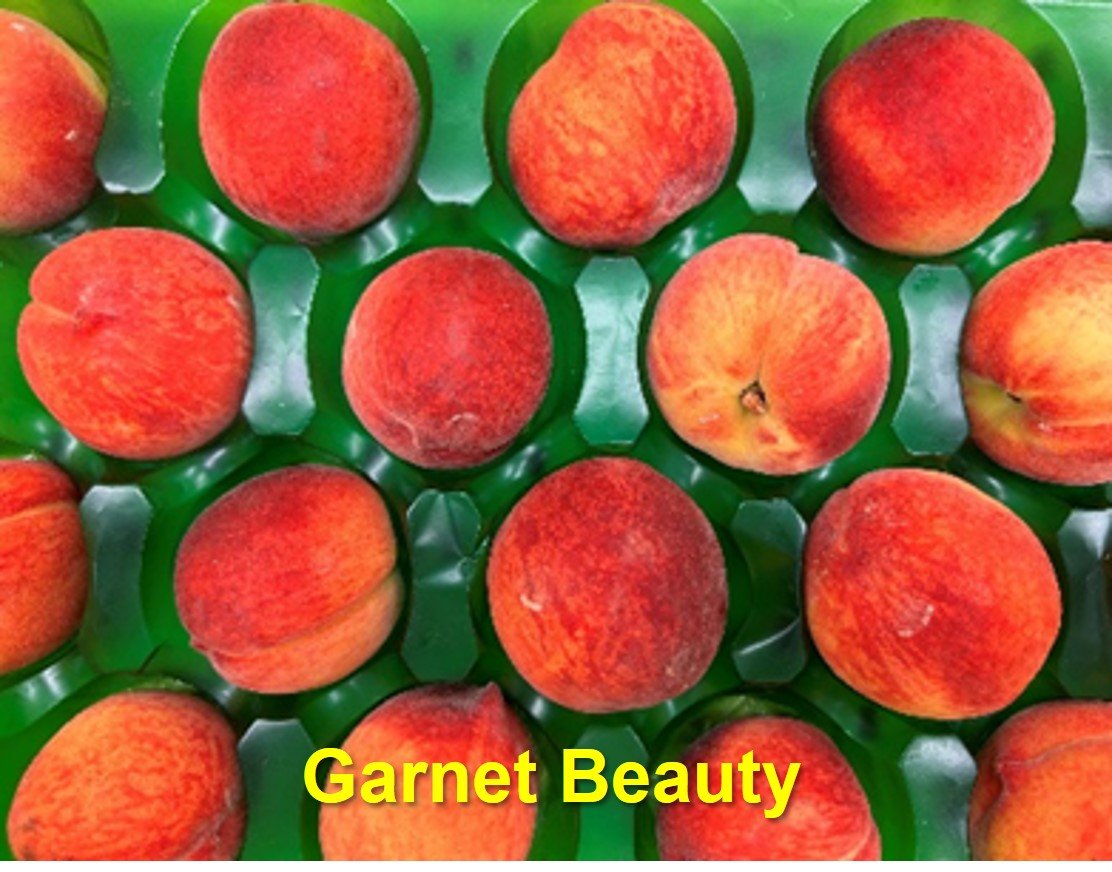 Garnet Beauty is a sport of Redhaven, ripening about 12-14 days earlier. Yellow-fleshed, clingstone, medium-sized peach, relatively hardy with 40-60% red blush. Fruit is high quality, firm, and freestone when fully ripe. The fruit has a prominent suture groove. The tree is vigorous and productive. The flavor is not great compared to other varieties this season.
Garnet Beauty is a sport of Redhaven, ripening about 12-14 days earlier. Yellow-fleshed, clingstone, medium-sized peach, relatively hardy with 40-60% red blush. Fruit is high quality, firm, and freestone when fully ripe. The fruit has a prominent suture groove. The tree is vigorous and productive. The flavor is not great compared to other varieties this season.
Other yellow-fleshed peach varieties: Flaming Fury PF7 is a medium to medium-large, semi-freestone yellow-fleshed peach that ripens during the Glenglo season. This is a good-yielding peach variety; however, most other varieties have better sizes.
White-fleshed Peach Varieties.
Sugar May is a firm, white-fleshed, clingstone peach ripening around July 7. dark red to purplish red skin color. The flavor is good, but acidic. The tree is vigorous and productive but susceptible to bacterial spot.
Challenges: For the white fleshed peach, it is a little too acidic, and some consumers’ expects white peaches in general to be very sweet and sub-acid. Skin is dark red, so one must bite to determine if it has ripened. The core stays greenish-yellow. As seen in the photo, the first superficial (right) bite has cream flesh; however, the slightly deeper (left) bite has greenish flesh. Also, it is moderately susceptible to bacterial spot.
Rutgers to Host Afternoon Cover Crops Field Day – August 5
Rutgers Cover Crops Field Day
*The program may be rescheduled in the event of inclement weather*
Date: August 5, 2025
Time: 3:00PM to 6:00 PM
Where: Snyder Research Farm, 140 Locust Grove Rd, Pittstown, NJ 08867
REGISTRATION REQUIRED:
Please register by calling RCE of Sussex County: 973-948-3040
*First 20 registrants will receive a FREE copy of the USDA SARE book: “Managing Cover Crops Profitably”
This event will highlight several cover crop research projects and foster discussion and networking on drone use in agriculture and cover crop management.
Please join us for this summer event.
We will also discuss an upcoming drone pilot certification training we will be hosting this winter.
3:00 PM Registration and Welcome – Stephen Komar, ANR Agent /Rutgers SARE Coordinator
3:15 PM Go to the Field – Calibrating a Drone for Agricultural Applications – Adam Kyle, Warren Co. Com. College, Teaching Administrator, Precision Agriculture, Stephen Komar
4:00 PM Summer Cover Crop Planting Comparison: Drone vs. Drill – Bill Bamka, ANR Agent
4:30 PM Row Middle Cover Crops vs Herbicides for Weed Management in Vegetable Culture – Kate Brown, ANR Agent
RC&D Cover Crop Programs- Laura Tessieri, Executive Director, North Jersey RC&D
Drone Seeding Cover Crops into Pumpkins – Peter Nitzsche, ANR Agent
5:30 PM Update on Worker Protection Standards and Pesticide Recordkeeping – Michelle Infante-Casella, ANR Agent
6:00 PM Pesticide Credits and Adjourn
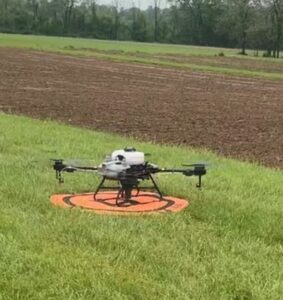
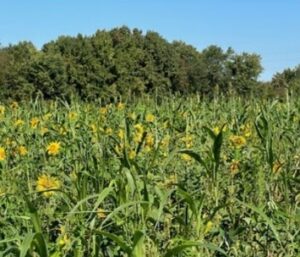
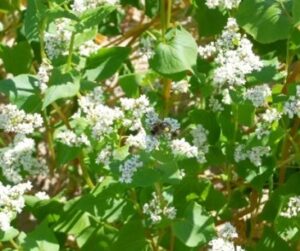
This event is sponsored by a grant awarded to Stephen Komar (Principal Investigator), Michelle Infante-Casella, and William Bamka Agricultural Agents/Professors, Rutgers Cooperative Extension, by the USDA, Sustainable Agriculture Research and Education, Professional Development Program.



